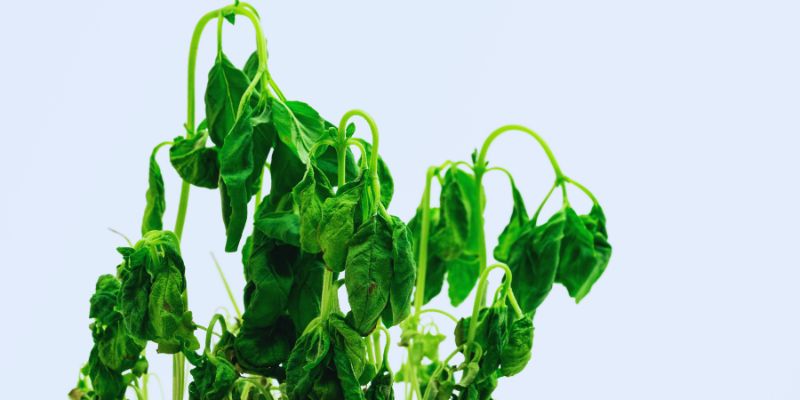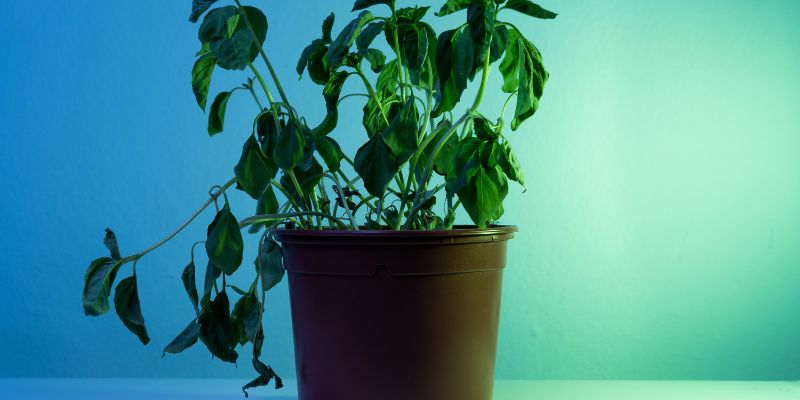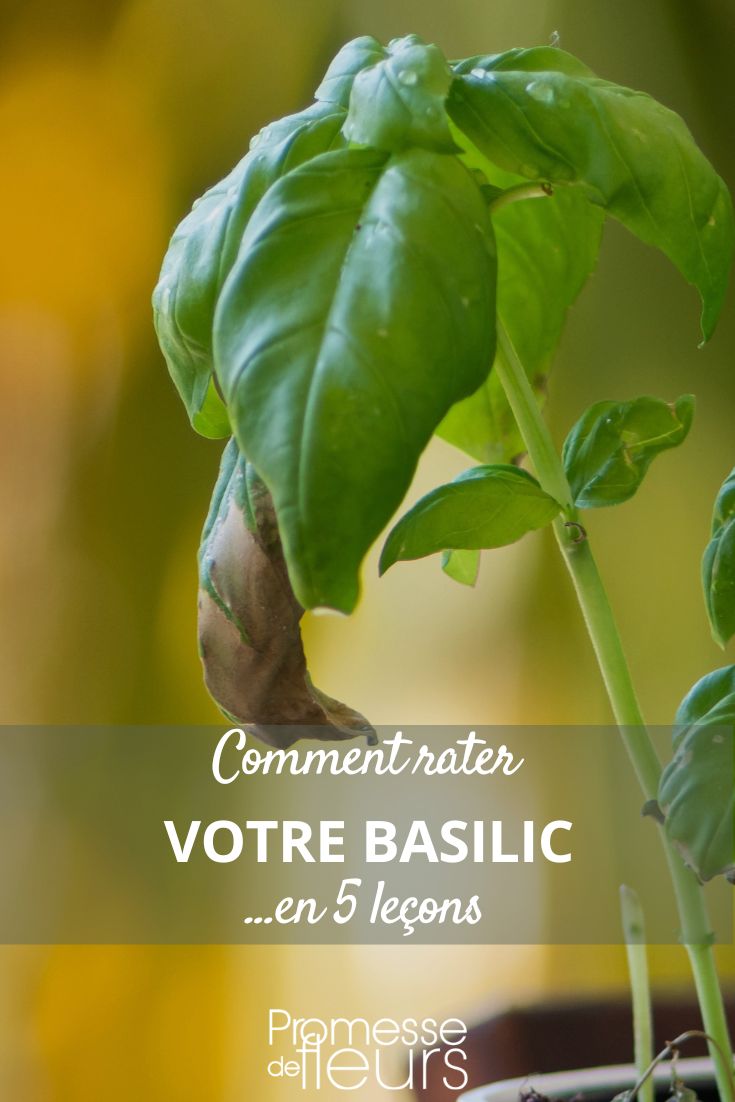Basil, this beloved herb of chefs and gardeners alike, is actually a bit temperamental… and many gardeners, whether novice or experienced, make classic mistakes that lead to disastrous results. Too much water, not enough light, poor soil, neglecting pruning… the list goes on! So why stand out? Isn’t it better to follow the crowd and fail at growing basil? We’re going to show you how to spectacularly fail at growing your basil, so you can learn with humour what not to do!
Lesson 1: forget about watering
Basil is a plant that loves its substrate to remain slightly moist. But if your goal is to see it wither quickly, nothing could be simpler: completely forget to water it! After all, it’s a plant from a warm climate, right? At first, it will lose a few leaves, which will yellow before falling off… then the whole plant will dry out quickly, like a houseplant forgotten during the holidays. You can then say goodbye to your dreams of homemade pesto.
But if, in a moment of clarity, you want to save your basil, make sure to water it regularly (neither too much nor too little) with lukewarm rainwater, especially during heatwaves. Also, provide it with an organic mulch on the surface to limit the drying out of the soil.

Lesson 2: place it in a dark corner
Basil is a plant that loves light. In fact, it needs plenty of sunshine to thrive and produce its aromatic leaves. But if your aim is to fail at growing it, place it in a dark corner of your home, like between two kitchen appliances; it’s much more convenient, isn’t it?
Without sufficient light, your basil will desperately stretch in search of brightness, becoming thin and leggy. The leaves will turn pale green and fall off at the slightest touch.
But if, in a moment of compassion, you decide to give your basil a chance, place it in a sunny spot, like a south-facing windowsill or a well-exposed garden. It needs six hours of direct light per day to develop. You’ll see, it will quickly regain its vigour and vibrancy.

Lesson 3: forget about the ideal temperature
Basil enjoys mild and moderate temperatures but fears cold and excessive heat. To fail at growing it, forget all that and subject it to extreme temperatures. After all, why worry about its specific needs? In winter, leave it in its pot or container outside; nothing like a little cold snap to see it wilt! And in summer, leave it in the blazing sun, or better yet, in a greenhouse… The leaves will turn brown and crispy, looking literally cooked by the heat. You can then say goodbye to your salads and homemade pestos.
But if, by a miracle of common sense, you decide to give your basil a chance, keep it in an environment where the temperature is between 18 and 25 degrees Celsius. Avoid cold drafts and protect it from heatwaves. You’ll see, it will thank you by producing fresh and tasty leaves all season long.

Lesson 4: give it poor, compact soil
To spectacularly fail at growing your basil, plant it in poor, compact soil. For pot planting, use clayey or poor garden soil. Compact soil does not allow the roots to breathe or spread. Your basil, trapped in this vegetative prison, will suffer from a lack of oxygen and essential nutrients. Its suffocated roots will be unable to draw the necessary water and nutrients. You’ll see its leaves yellow, shrivel, and fall one by one. A true symphony of plant suffering!
To do it right, water this clayey soil just enough to turn it into a heavy, sticky mud, but not too much, or the basil might find a few drops of comfort. And above all, don’t even think about adding compost or fertilisers; that would be cheating.
But if, in a sudden fit of kindness, you decide to save your basil, provide it with light, well-drained soil enriched with compost. Add a bit of sand to improve drainage and ensure the soil remains slightly moist.

Lesson 5: never prune your basil
If your goal is to see your basil wither, never prune it! Let it grow as it pleases; it will manage on its own to become a chaotic bush.
Without pruning, your basil will become an impenetrable jungle of long, weak stems. The older, lower leaves, deprived of light, will yellow and fall, leaving behind a bare and unhealthy plant. In a few weeks, your basil will resemble a wild creature escaped from a tropical forest, but without the lushness or health. The stems will be so long and twisted that they won’t be able to stand upright, and the whole plant will eventually collapse under its own weight.
Also, let the flowers develop freely; after all, why not let the plant exhaust itself producing seeds instead of tasty leaves? Unless, of course, your goal is to obtain basil seeds. Soon, your basil will be unable to provide a single leaf worthy of being picked for your cooking.
But if, in a flash of genius, you decide to save your basil, prune it regularly. Cut the stems just above a node of leaves to encourage branching and the growth of new leaves. Remove the flowers as soon as they appear to keep the plant focused on producing leaves. You’ll see, your basil will become a dense, vigorous bush, ready to flavour your dishes all summer long.
































Comments